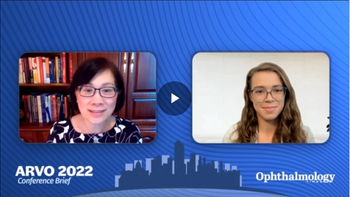
Dr Jennifer I. Lim reviews the 2-year results of the YOSEMITE and RHINE trials, outlining the efficacy, durability, and safety of faricimab in diabetic macular oedema.

Dr Jennifer I. Lim reviews the 2-year results of the YOSEMITE and RHINE trials, outlining the efficacy, durability, and safety of faricimab in diabetic macular oedema.

Dr Eva Chamorro points out that myopia control spectacle lenses affect the diurnal rhythms in the AL in young adult human and produced a small short-term increase in the AL that varies in intensity and time interval for each of the 3 studied lenses.

Investigators from the Karolinska Institutet and St. Erik Eye Hospital, Stockholm, Sweden, reported that they have developed a prognostic test, referred to as serUM, that they believe is a strong predictor of metastasis of uveal melanoma.

THR-687 is currently being evaluated in a phase 2 clinical trial in patients with DME. The first data from the dose-optimization study is expected to be released in the first half of 2022.
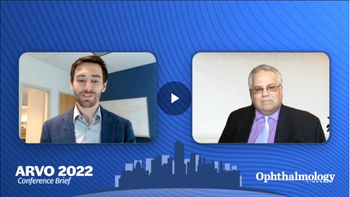
Mike Watson, Vice President of OraNet, unpacks some of the most pressing challenges to clinical research in today’s climate.

The study found no association between treatment and the risk of chronic kidney disease or end-stage renal disease.
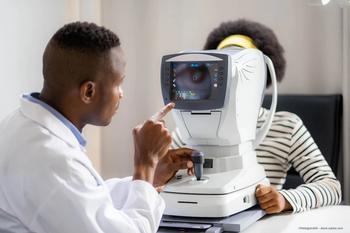
In a poster presented at the Association for Research in Vision and Ophthalmology’s 2022 annual meeting, Dr Osama Ibrahim Hirayama and colleagues offered results that demonstrating that anisometropia and astigmatic error were greater among the patients with high myopia compared with the other groups. Compared with the subjects with no myopia, those with high myopia reported significantly more dryness, less photophobia, and less pain.
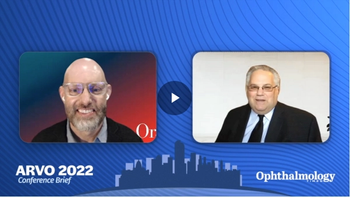
Dr David Bingaman of Ora Clinical discusses today’s need to accelerate clinical studies and increase investments in retina and challenging disease states.
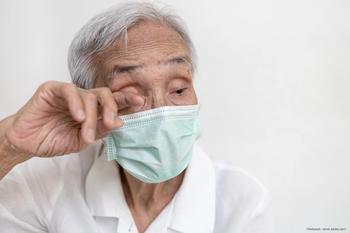
During a presentation at the Association for Research in Vision and Ophthalmology’s 2022 annual meeting, Dr Yuichi Hori and colleagues found that taping the top border of a surgical mask to a clinicians’ skin reduces the potential for ocular surface damage resulting from expirations of air reaching the ocular surface during the COVID-19 pandemic.
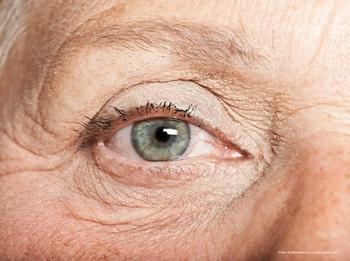
The axitinib intravitreal implant (OTX-TKI) is being evaluated to treat wet age-related macular degeneration in a phase 1b clinical trial.

Investigators from the New York University Grossman School of Medicine presented data at the ARVO 2022 annual meeting that concluded mapping of the relative cerebrovascular reactivity in the murine brain showed widespread brain changes resulting from the chronic IOP elevation and demonstrates vascular involvement in glaucoma both within and beyond the primary visual pathways.
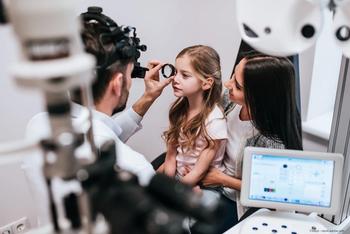
In a poster presented at the Association for Research in Vision and Ophthalmology’s 2022 annual meeting in Denver, Dr Mamoru Ogawa noted that investigators have found that the choroidal and central corneal thicknesses increased over a very short period of time following intensive outdoor activity.
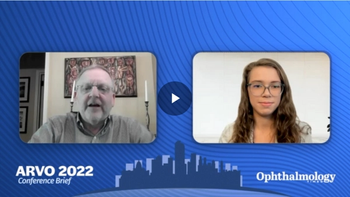
At ARVO 2022, Dr Jason S. Slakter presents data on the efficacy and safety of OPT-302 when combined with ranibizumab for polypoidal choroidal vasculopathy.
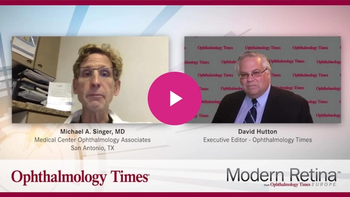
Dr Michael A. Singer speaks on the highlights of his presentation focusing on IOP in the PALADIN 24-month data intravitreal steroid (ILUVIEN).

Joseph Grieco, PhD, notes that treatment fills a gap for patients who are unresponsive to the standard treatments for noninfectious keratitis.
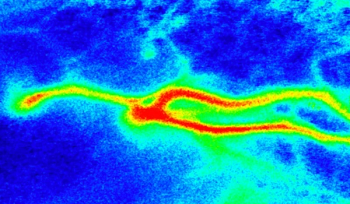
Non-invasive ocular blood flow measurement using laser speckle flowgraphy may be a new indicator of shock-related organ damage, investigators report.

Dr Christopher Starr discusses key points from his virtual ARVO 2021 presentation regarding dry eye disease flares, including a rapid readout assessment of 10 years' worth of world literature to analyze studies in which the inflammatory disease's condition are categorized.
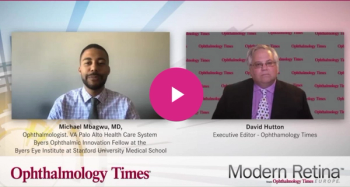
Dr. Michael Mbagwu speaks on the highlights of his virtual 2021 ARVO presentation regarding the development of an algorithm tool that links patient imaging to their clinical data, specifically within the AAO IRIS Registry.
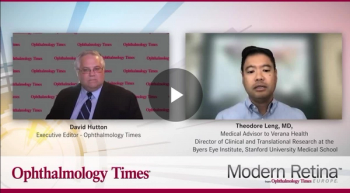
Dr Theodore Leng discusses the highlights from his presentation on "AAO IRIS Registry Data Replicates VIEW 1 and VIEW 2 Clinical Trial Outcome Data," during the virtual 2021 ARVO meeting.
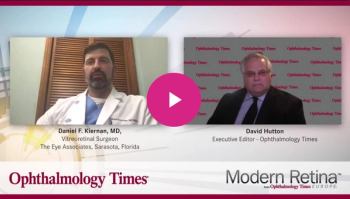
Dr. Daniel F. Kiernan discusses key findings of a clinical study analyzing the effect of dexamethasone intracameral drug-delivery suspension on macular thickness based on OCT testing following vitreoretinal surgery.

During a presentation at the ARVO virtual meeting, Lloyd Paul Aiello, MD, PhD, explains that a key hurdle for diabetic retinopathy is the lack of patient awareness, which is a substantial contributor to non-adherence to eye care guidelines and poor outcomes.

During an ARVO presentation, Paul Yang, MD, PhD, explained that in a clinical trial, investigators used an adeno-associated viral vector to deliver a normal functioning copy of the RPGR gene via subretinal injection.
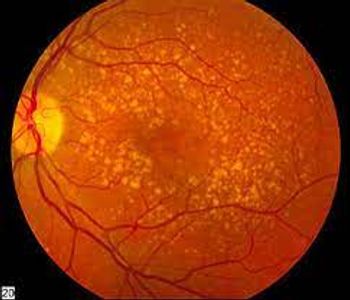
EYS809, a non-viral gene therapy sustained drug-delivery product that delivers anti-vascular endothelial growth factor to the eye, may replace the need for repeated intravitreal anti-VEGF injections and improve vision in patients diagnosed with wet age-related macular degeneration.
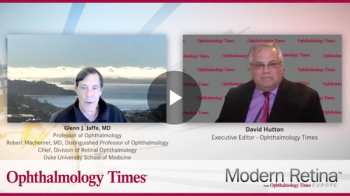
Dr Glenn J. Jaffe discusses the key points of his virtual presentation on targeting neurodegenerative diseases with risuteganib, minimizing damage to the retina when compromised, and the need for newer treatment therapies to target different pathways.

Robyn Guymer, PhD, MBBS, highlights the latest trial results for faricimab, the first bispecific antibody designed for intraocular use in treating patients with neovascular age-related macular degeneration.

According to Sunil Srivastava, MD, optical coherence tomography characteristics may be predictive of the efficacy of the injections.

During ARVO’s 2021 virtual annual meeting, John Wells, MD, presented efficacy, durability, and safety findings from phase 3 YOSEMITE and RHINE trials.

Bryce Buchowicz, MD, outlines roadblocks to timely diagnosis of central retinal artery occlusion and treatment with tissue plasminogen activator during a virtual presentation at ARVO.

During a presentation at ARVO, Jessica Liu explained that patients with BRVO or CRVO with any lapse in treatment of 3 months or longer are at risk for poorer outcomes.
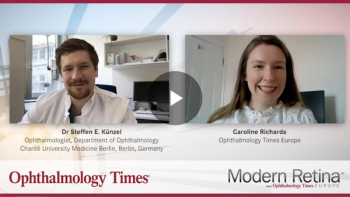
Dr Steffen E. Künzel discusses the key points of his research presentation regarding low vulnerability of the posterior eye segment to SARS-CoV-2 infection.